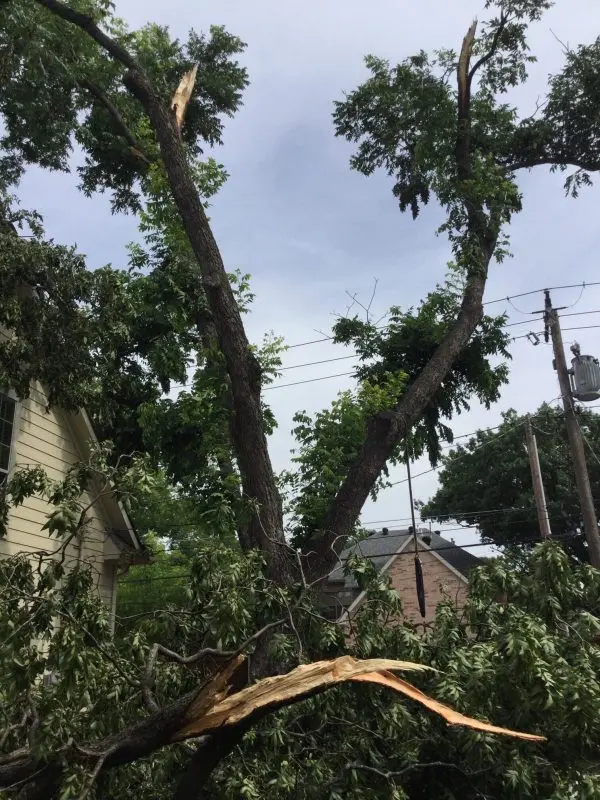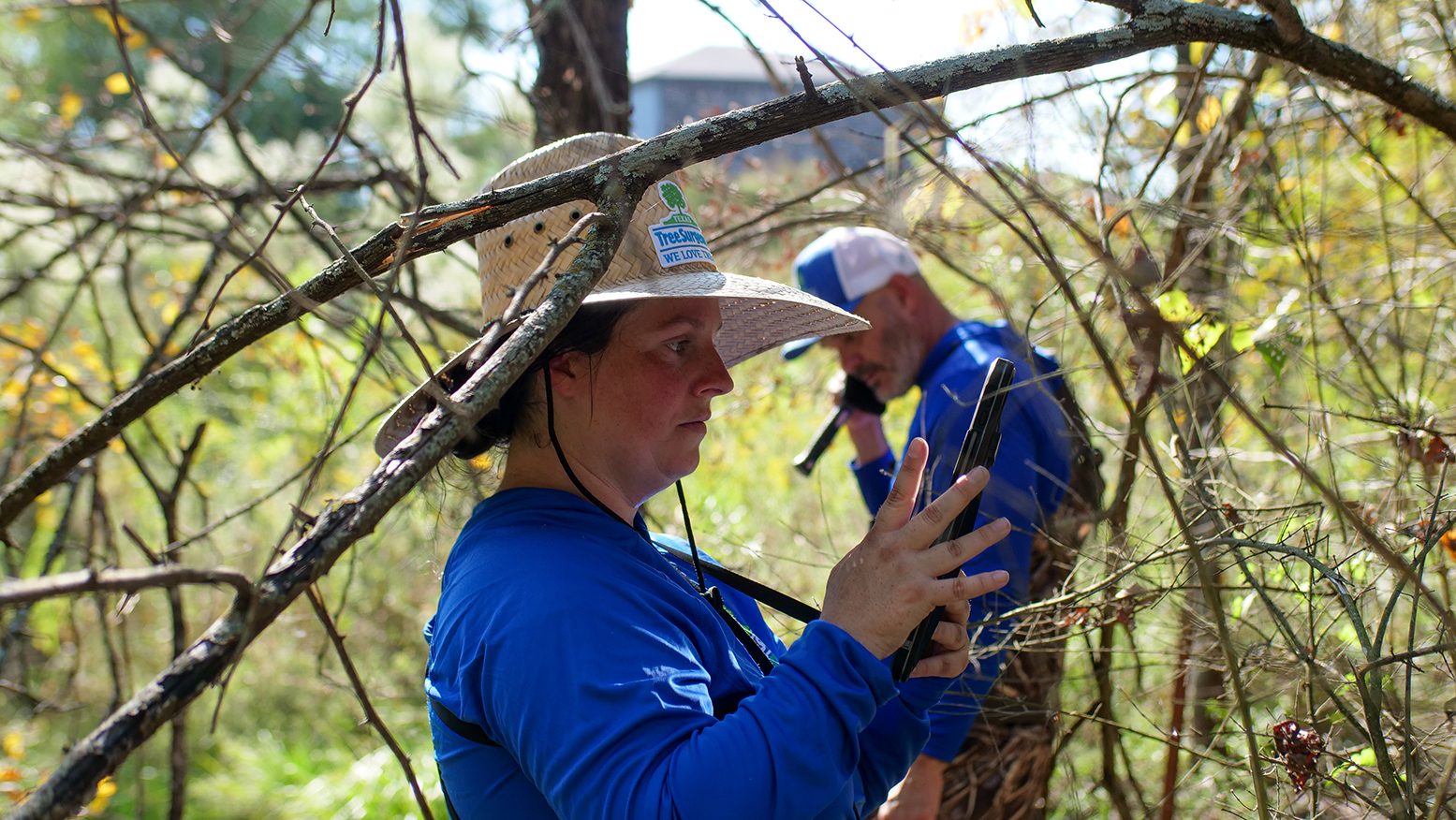After the Storm…

Trees that survived the severe storm damage are going to need special care over the next few years. The loss of canopy will reduce the trees’ ability to photosynthesize for food and to take up water. We are entering the hottest part of the year; after the rains have passed, increased watering and fertilization are key. It is up to tree owners to supplement the nutrients that trees need, but can no longer absorb from their environment. Your arborist can discuss fertilization options, including our comprehensive, year-round Plant Health Care programs. Contact us to make sure you are taking the best care of your damaged trees.

Extensive defoliation, or loss of leaves, is common after severe storms with heavy rain, wind, and hail. While the leaves should grow back, the tree’s ability to take up nutrients and water from the soil is greatly impaired
While fertilization goes a long way toward helping damaged trees recover, they are also more susceptible to disease and pest infestations. With the recent wet weather, fungal issues are increasingly common, but insect activity and environmental stress are also a danger. Over the coming months and years, we expect to see:
Tree Failure and Death in Some Cases
While trees have the ability to store energy to last them for years, as these stores are depleted due to damage and infestation, the trees will slowly die.
Oak Wilt
Already a major concern in North Texas, the oak wilt-carrying beetles are drawn to open wounds and damaged areas. Until we have temperatures consistently above 90 degrees, the beetles and the fungus they carry will remain active.
Sunburn and Sun Scald
With reduced leafy canopy, the branches and trunks of trees will be exposed to more direct sunlight, which can cause further damage. Red oaks are especially prone to sun-related damage.
More Broken Limbs and Tree Damage
Trees grow in response to their surrounding, especially other trees. When one tree in a group is damaged or removed, other trees are exposed to the environment in ways they have not been before. As future storms and wind move through the area, the newly-exposed trees may not be adapted to their exposed conditions, and may not be able to withstand the elements. Ask your arborist to see if tree cabling and bracing might be recommended to reinforce your trees.
As you are considering fertilization, also talk to your arborist about treatment for fungi, bacteria, and pests. While treatments have varying effectiveness, depending on the specific situation, your arborist can discuss options for your trees. Contact us to have an arborist come out for a post-storm assessment.
After such a loss, the best remedial measure is to plant new trees. The best time to plant trees is the winter, so use the intervening months to consider where and what kind of trees to plant. It may not be the best idea to replace a removed tree with the same species. Talk to your arborist about types of trees that would thrive in your particular conditions, and to discuss the best place in your yard to plant a tree. (Even if you have had a tree removed, we don’t recommend replanting in the same place, as underground root systems may hinder the new tree’s growth.) Choose native species that can better cope with our North Texas weather. If you don’t have room for more trees, consider supporting a community organization that is replanting for those who need them.
The storm on Sunday, June 9th, 2019, damaged thousands of trees in Dallas, Richardson, Carrollton, Irving, and the surrounding areas. For many, this was the quickest, most devastating storm in recent memory. According to WFAA-TV meteorologist Pete Delkus, the winds increased to 63 MPH in only 5 minutes, with peak gusts at 71 MPH a few minutes later.
When the storm hit, one of our arborists was trapped in her home due to fallen branches, two staff members had flooded cars, two arborists were out of town, and our operations manager was stuck at a gas station, out of gas, waiting for the power to come back on. Our office was without power for three days, and those of us with power worked from home, the rest on the road, despite spotty cell service. Still, we tried to respond as quickly as we could, and have been able to assess over 700 properties for damage and deal with storm damage at nearly 200 homes. Visit our Facebook page for some photos of the damage we have seen!
At Texas Tree Surgeons, we love trees, and we hate to see such widespread damage. We are proud to call North Texas home, and we are grateful for the opportunity to care for your trees, and the continued support of our community. If you ever have any questions or concerns about your trees, please let us know!
Related Blogs
Similar blogs related to this topic


Top 10 Things We'd Tell You as an Arborist if We Weren't Afraid of Hurting Your Feelings
This is a list of tree care worst practices that you, or someone you know may be guilty of. Read the following list at your own risk. You’ve been warned, feelings may get hurt. 1.…
Read more

Avoid These Tree Care Mistakes for a Healthy Landscape
Below is a list of overlooked mistakes that could jeopardize the health of your trees. From missteps in pruning to incorrect watering practices, discover how to give your trees the care they deserve. Red oak…
Read more

Why do Arborists Recommend Soil Sampling in Urban Areas like Dallas?
Soil sampling is a crucial practice in urban areas like Dallas. It helps arborists make informed decisions about your landscape to ensure a healthy urban ecosystem. Our native soils vary widely—from the dense clays of…
Read more
